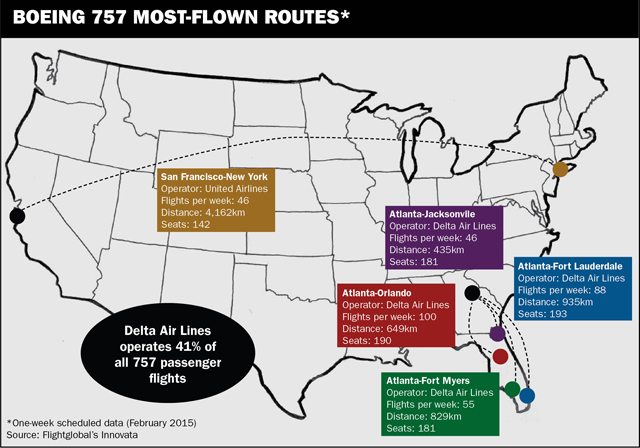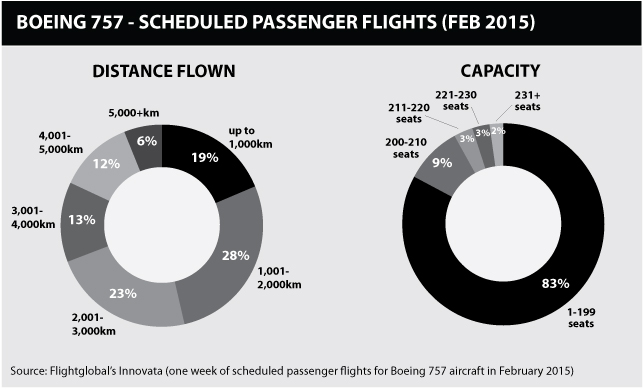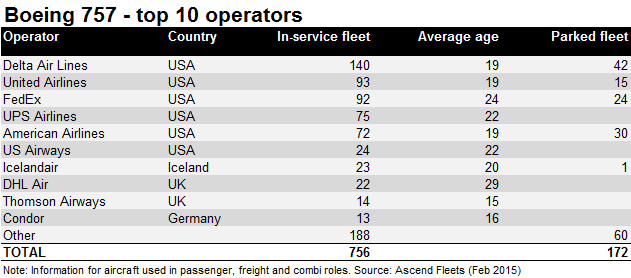Boeing has closed the door on any speculation that it might revive its veteran 757 with a re-engining, conceding that the economics of such a move do not add up.
Capable of carrying some 240 passengers on routes up to 3,700nm (6,850km), the 757 sits between the largest and longest-range single aisles and the smallest widebodies. American Airlines and Delta Air Lines, for example, use 757s on routes between the USA and western Europe – just outside the reach of the next-generation Airbus A321neo and Boeing 737 Max 9 – and have been pushing for a replacement.
But Boeing earlier this year scotched hopes of any short-term move to develop a new aircraft in this segment, and now has declared that it will not resurrect production of the 757 equipped with a new powerplant
Asked to respond to a report in the Wall Street Journal that cited a source within Boeing saying a re-engined 757 was one option being considered as the company’s answer to a recently launched long-range Airbus A321neo, vice president Randy Tinseth was unequivocal: “No, no.”
Re-engining, he told the Pacific Northwest Aerospace Alliance conference in Seattle on 11 February, had been looked at a couple of times but the economics don’t make sense: “It just doesn’t work.”
Boeing has concluded that the 757 market is too small to justify investment. Tinseth said there are 550 passenger-carrying 757s still in operation, but only about 50-80 flying transatlantic routes. And, he added, the 757 production system was very expensive, ruling out reviving it for a re-engining.
Airbus in January 2015 launched the long-range version of its A321neo, capable of carrying 206 passengers over 4,000nm – surpassing the in-development 737 Max 9’s 180 seats and 3,600nm range. Toulouse believes there is enough demand for an aircraft on long thin mainly transatlantic routes – too far for other next-generation narrowbodies, but without sufficient passengers for a widebody – to justify its albeit modest investment.
While Boeing might eventually come up with a clean-sheet aircraft in this category, any such move seems a decade away. The manufacturer, says Tinseth, wants eventually to fill the space between the 737 Max 9 and the 787-8 widebody with a new aircraft: bigger than the 757 with about 20% more range. But with the KC-46 tanker, 737 Max, 787-10 and 777X still in development, Boeing’s research and development resources are occupied at least until 2022, Tinseth adds.
Flightglobal data below shows that the vast majority of 757s are being flown on routes of under 3,000km, with only 18% flying over 4,000km. In addition, most carry fewer than 200 passengers, which would seem to back Boeing's claim that the market to replace 757s with a more fuel efficient, longer-range narrowbody is small. Instead, most 757s could, according to these figures, easily replaced by 737 or A320 family aircraft.




Delta 757-232, in its natural environment
AirTeamImages
Source: Flight International



















